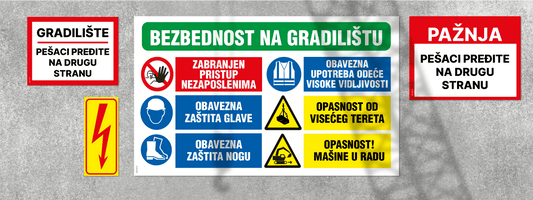
How are self-adhesive labels made?
Share
Self-adhesive labels are among the most versatile and flexible tools for branding, labeling and product promotion. We can find them on everything from water bottles to food packaging, cosmetic items and even industrial products, on the product itself, on protective packaging, on additional packaging or at the point of sale itself. Understanding the manufacturing process, the benefits of different materials and printing technologies is key to recognizing the superior services of the graphics industry.
Materials for making self-adhesive labels
The first step in making self-adhesive labels is choosing the material. The most commonly used is the locally known " Mouflon paper ", which is a special type of paper with a self-adhesive backing. Mouflon papers vary in thickness and surface, offering matte or gloss options for different effects. For more permanent labels or those used outdoors, foils are popular. Polyester and PVC (vinyl) films are resistant to water, abrasion and UV radiation, making them an ideal choice for products that are frequently handled or stored in conditions with large temperature differences, especially in outdoor conditions.
Technologies for making self-adhesive labels
After selecting the material, the printing process follows. Depending on circulation and budget, there are three main printing technologies:
- Laser printing : Ideal for medium runs as well as prototypes, digital color laser printing enables fast production and flexibility in design, while black-and-white laser printing provides the most economical prices for making product labels . It is printed directly from a digital file onto label material, without the need for printing plates.
- Ink-jet printing : Also a digital technique, ink-jet printing uses liquid inks to transfer the desired design onto the label. This technology is also suitable for printing photos and color designs in smaller print runs . It is characterized by a technological variety of colors: water, solvent, latex, UV, which gives it versatility in the type of printing material.
- Offset printing : The most economical option for large runs, offset printing uses metal plates onto which the design is transferred, which is then transferred to the label material. Offset printing offers high quality and color consistency but is limited to paper and some types of polyethylene materials
- Flexo printing : This technology is responsible only for the largest editions such as consumer goods with the predominant use of printing materials based on polypropylene and polyethylene.
After printing, the labels are machine-cut through a process known as slitting, so that only the top layer of the label is cut away, leaving the backing intact. This makes it possible to easily separate the label from the substrate and stick it to the desired surface. Modern printing facilities use digital cutters to precisely cut labels in a variety of shapes and sizes, from simple squares and circles to the more complex paths required by designers.
Advantages of digital printing for making labels
Digital printing has revolutionized the production of self-adhesive labels and declarations. Its main advantages are:
- Speed : Digital printing enables fast production of labels, even for smaller orders. It is ideal for clients who are looking for labels urgently or for those who want to test a new design before committing to larger production.
- Variable data : Digital printing enables the personalization of labels with variable data such as barcodes, serial numbers or expiration dates.
- Wide selection of materials : Digital printers can work with a wide range of label materials, from paper to foils, giving customers more options.
- Lower costs for smaller runs : For smaller runs, digital printing is very often more economical than offset printing, because there is no need to make printing plates and other fixed costs.
Protecting the printed label: the advantages of plasticization
After printing and cutting, additional protection for more durable and visually attractive labels can be achieved by lamination . Plasticization is the process of applying BOPP (a type of polypropylene) film, only 14-30 microns, with an additional layer of adhesive that is thermally activated, thus creating a strong protective surface over the printed layer. The lamination can be matte or glossy, and there are even variants with a textured surface. Plasticization offers a number of advantages:
- Protection : Lamination protects labels from scratches, moisture, oil and grease. This makes them ideal for labels used on products that are frequently handled and manipulated or stored in adverse conditions.
- Durability : Laminated labels are more durable and wear-resistant than unplasticized ones, making them ideal for long-term use. They also have a favorable effect on extending the UV resistance of the print.
- Visual appeal : Lamination can improve the visual appearance of the label, giving it a glossy or matte finish. This will certainly make the label look more professional and attractive and, above all, more luxurious .
- Additional functions : Plasticization can also be functional. For example, it can be used to imprint holograms on labels as an additional protection against counterfeiting.
Conclusion
Self-adhesive labels are a key tool for branding, labeling and promotion. Understanding the different materials, manufacturing processes, printing technologies and benefits of lamination is of utmost importance for clients looking to add value to their products and services or improve their point of sale presence.
We recommend topics for you to consider:
The Impact of Label Design on Sales: How label design can influence customer behavior and increase sales.
Use of barcodes and QR codes on labels: Track products and provide additional information to customers.
Environmental aspects of label production: Use of biodegradable and recycled materials.
This article is just the beginning. We wholeheartedly recommend that you continue to research and learn about self-adhesive labels because that knowledge will pay off many times over.



